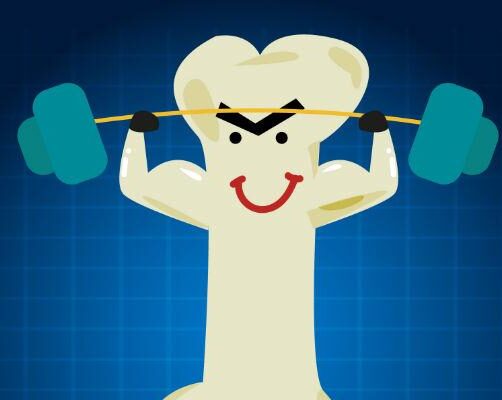27 November, 2020
Calcium Breaks No Bones: plan the right strategy from now

We need calcium for our heart, muscles, and nerves to function properly and also for blood clotting. Our body maintains total serum calcium (blood calcium) within a narrow range of 8.8 to 10.8 mg/dL. When the calcium levels fall due to insufficient calcium in the diet or inadequate absorption of calcium from the diet, the body must take calcium from its stores in the skeleton. That weakens existing bone resulting in osteoporosis and prevents the formation of new bones. Thus bones are in a state of flux, constantly being remodeled even after growth stops. Bones are dynamic. They grow and increase in length and breadth.
Many studies have shown that low calcium intake throughout life is associated with low bone mass and high fracture rates. Inadequate calcium intake during the growing years leads to low stores and poor bone mineral density. Children and adolescents who are picky eaters or on fad diets are prone to this problem. People attain their peak bone mass between the ages of 25 and 30. Around the age of 40, the rate of loss begins to exceed the rate of regeneration, and our bones slowly become weaker. Eventually, if the peak bone mass attained is inadequate, osteoporosis sets in and leads to fractures in senior citizens.
Planning The Right Strategy
Giving your bones enough calcium is a strategy and a diet rich in calcium is just one part of it. Some facts on calcium given below can help you plan the right approach:
• Adults absorb only approximately 30 % of ingested calcium, but a few individuals may absorb as little as 10% and some (rarely) as much as 60% of ingested calcium. Late in life, bone retention of calcium from food and supplement is limited.
• Vitamin D increases calcium uptake of the body by stimulating the production of calcium-binding proteins and other mechanisms. Adequate vitamin D3 from sunlight or supplement is essential.
• Absorption of calcium by the body depends on the need. The greater the need and the smaller the dietary supply, the more efficient is the absorption.
• Growth, pregnancy, lactation, calcium-deficient state, or exercise enhances calcium absorption.
• Our body absorbs calcium rapidly in an acidic medium. Hydrochloric acid secreted in the stomach during the meal increases calcium absorption by lowering the pH. That is why it is advisable to take calcium supplements with meals, especially in older adults. Also, long-term use of antacids(drugs to reduce stomach acidity ) reduces the absorption of calcium.
• Lactose enhances calcium absorption, therefore milk and milk products are a good source of calcium.
Factors that Interfere with Calcium Absorption
Oxalates from foods such as dark green leafy vegetables, chocolates, coffee, rhubarb, etc. form insoluble calcium oxalates in the digestive tracts and cannot be absorbed. For example, our body absorbs only 5% of the calcium in spinach.
Similarly, phytic acids found in nuts and pulses combine with calcium to form calcium phytates that are insoluble and cannot be absorbed.
More than thirty grams of dietary fiber per day decreases calcium absorption.
A high sodium intake contributes to increased urinary calcium losses. also read
Chronic hyperthyroid conditions result in loss of calcium from bones.
Aging reduces the efficiency of the skin to produce vitamin D3 and thus affecting the absorption of calcium.
• Rapid decrease in serum estrogen concentration during menopause is the main factor contributing to bone loss in women.
• Regular excessive alcohol consumption and tobacco use in any form loses the benefits of the “bone bank” in adults.
Calcium does not enter the bone efficiently unless there are micro-tears in the bone. which is facilitated by weight-bearing exercises such as running, jogging, walking, dancing, and weightlifting.
Protip:
From childhood the intake of calcium and vitamin D3 should be sufficient. Try to expose yourself and your children to sunlight.
Exercise aerobically for 30 to 40 minutes a day.
Do light (2 kilos) weight training.
Amatulla Merchant
Clinical Nutritionist And Dietitian
amatullamerchant@gmail.com

5 thoughts
Excellent! Very informative and easy to understand at the same time.
Informative…keep it up spreading knowledge 🙂
Great job Amatulla!
Info is very knowledgeable please do mail such useful information
Thank you so much
Thanks for sharing useful information